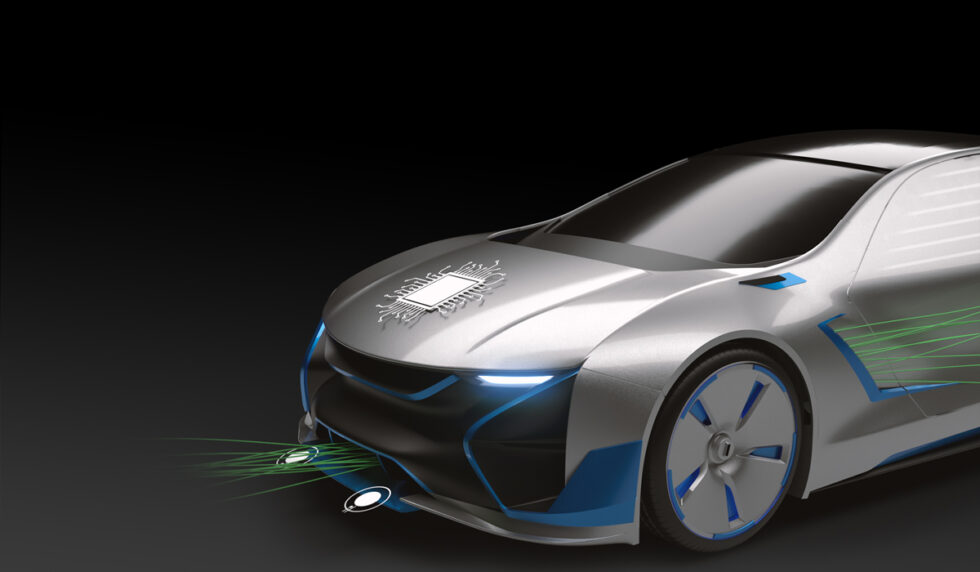Aerodynamics of Electric Vehicle Wheels
Dive into the importance of aerodynamics in EV wheels and how it impacts range and performance on the road.

Discover the cutting-edge world of EV wheel aerodynamics, a critical factor shaping the future of transport. As Electric Vehicles (EVs) continue their quantum leap into mainstream adoption, their design intricacies are taking center stage. Surprisingly, it's not all about battery technologies or charging infrastructures; the humble wheel also plays a huge part in an EV’s performance and range.
Unlocking the Mysteries of EV Wheel Aerodynamics
Let's delve deeper into what makes EV wheel aerodynamics so important. The efficiency of an electric vehicle, significantly depends on how well it can overcome air resistance. A significant contributor to this air resistance? You guessed it, the wheels. From the design and materials to the wheel tire interface, there's a lot more science involved than meets the eye.
Table of Contents
- Importance of Aerodynamics in EVs
- Impact of Wheel Design on Aerodynamics
- How Wheel Materials Affect Aerodynamics
- The Role of Wheel-Tire Interface in Aerodynamics
- Innovations in EV Wheel Aerodynamics
Importance of Aerodynamics in EVs
Ever wonder why electric cars look so sleek and futuristically streamlined? The design is more than just about aesthetics; it is all rooted in aerodynamics. For many, the word conjures images of wind tunnels with smoke streams wrapping smoothly around the model vehicle. But what does it precisely mean when we talk about EV wheel aerodynamics?
Remember, aerodynamics is mainly about two things: drag and lift. The goal for any vehicle, not just EVs, is to minimize drag and manage lift. However, it becomes incredibly important with EVs as increased drag directly reduces the range, one of the critical aspects EV manufacturers continuously strive to improve.
Why Should You Care About Aerodynamics in EVs?
- Enhances Range: Lower drag means less resistance to overcome, hence, extending the range.
- Improves Speed: With less air resistance, EVs can attain higher speeds more efficiently.
- Reduces Energy Consumption: Your EV takes less of a beating from air resistance, which means less energy is needed, thus, lower electricity consumption.
Impact of Wheel Design on Aerodynamics
You might believe that aerodynamics is only about the car's shape as a whole. But the truth is, even small components such as mirrors or wheels can significantly impact it. It's quite intriguing how the design choice in wheels can affect vehicle performance.
The Science Behind Wheel Design
The wheel's overall shape and design can cause air to be channeled more or less efficiently around the tire. For instance, a wheel with larger open channels between the spokes can create turbulence, which increases the air's resistance against the vehicle. Conversely, wheels with a more solid, flush design help to channel air smoothly around the car, reducing turbulence and minimizing drag.
How Wheel Materials Affect Aerodynamics

Ever fancied sleek alloy wheels or perhaps opted for steel wheels for their affordability? Your choice might directly affect your car's aerodynamics and hence its performance. It's crucial to understand the effects of different materials on wheel performance and how this in turn impacts aerodynamics.
- Alloy Wheels: These popular lightweight wheels are often chosen for their style and performance benefits. Lower weight means lesser energy required to turn the wheels, thus, impacting aerodynamics positively.
- Steel Wheels: Generally heavier, requiring more energy for rotation, but often a cheaper alternative to alloys. While their impact on aerodynamics is relatively minor, any increased mass will require more energy, hence altering aerodynamic behavior.
- Carbon Fiber Wheels: An emerging trend, carbon fiber wheels offer a mix of strength and lightness. However, their expensive pricing often relegates them to high-performance or luxury EVs. Their weight reduction advantage can contribute positive gains in vehicle aerodynamics.
The Role of Wheel-Tire Interface in Aerodynamics
For some, the term 'wheel-tire interface' sounds like a piece of high-tech jargon. Yet, the reality is quite simple - it's where the rubber meets the road. Let's demystify this concept and explore how it influences vehicle aerodynamics.
Wheel and Tire Design: A Match Made in EV Heaven
The wheel is but one part of the equation, its partner in crime, the tire, equally impacts aerodynamics. The design and width of tires play a vital role in how smoothly air flows over the wheel-tire interface. Wider tires — which indeed provide better grip — can create a larger 'footprint,' resulting in more air resistance. Conversely, narrower tires minimize air resistance, but at the sacrifice of grip.
Electric vehicles often opt for unique tire compounds and tread patterns, emphasizing low rolling resistance to enhance efficiency and range. However, tire designs are a careful balancing act as safety aspects like grip and braking performance should never be compromised.
Innovations in EV Wheel Aerodynamics

Technological advancements and innovation are at the heart of the booming EV industry. As we've seen, this extends not only to the drivetrains or batteries but also to the wheels. A fascinating arm of this innovation regards, you guessed it, aerodynamics.
Introducing Aerodynamic Wheels and Tires
Aerodynamic wheels take the scientific principles of reducing drag and apply them right on the wheel design. These wheels tend to have fewer spokes, or in some instances, completely enclosed designs for ultra-smooth airflow. Examples include the aerodisk wheels featured on the Tesla Model 3 or the bespoke aerodynamic alloy wheels on the Audi e-Tron.
Innovation isn't just restricted to wheels. Tires too are getting a hi-tech upgrade. Michelin's Energy Saver A/S tires — with a special compound designed for low rolling resistance — are designed specifically for electric and hybrid cars.
Future of EV Wheel Aerodynamics
While we're making leaps in marrying the science of aerodynamics with EV wheel design, there's still much road to tread. Concepts like active aerodynamics — where the vehicle dynamically adjusts its own shape or vents to optimize airflow based on speed or road conditions — promise to shift gears in how we perceive EV performance.
Conclusion
Wheel aerodynamics turns out to be an important, yet overlooked factor in determining overall EV performance. Remember, every little bit counts when it comes to squeezing out those extra miles of range. The future promises a world where your stylish EV wheels don't just look good, but work wonders in cutting through the air, achieving the perfect mix of efficiency and style.
More Info from WheelWorldDigest
If you're interested in learning more about the world of wheels and automotive technology, stay tuned to WheelWorldDigest. As the global compass to auto news, we're always spinning out fresh insights on industry trends and innovations.
What's Your Reaction?









































































